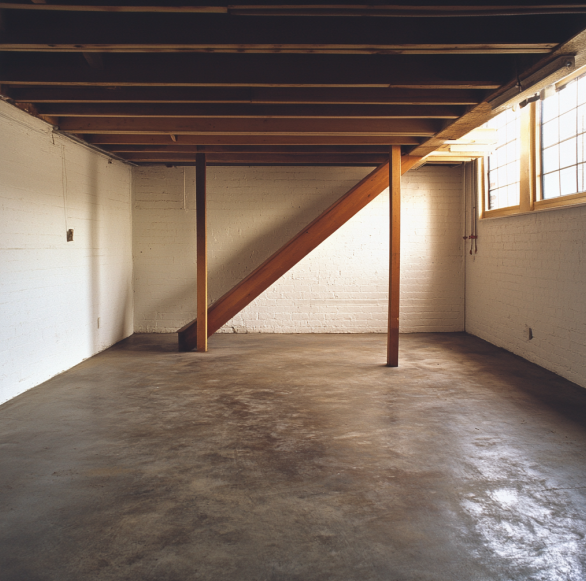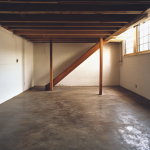 As the old saying goes, ‘A stitch in time saves nine.’ When it comes to the issue of wet basements, you might be wondering whether this is a minor inconvenience or a red flag for potential long-term damage.
As the old saying goes, ‘A stitch in time saves nine.’ When it comes to the issue of wet basements, you might be wondering whether this is a minor inconvenience or a red flag for potential long-term damage.
It’s not uncommon to dismiss a damp basement as a harmless, albeit annoying, aspect of home ownership. But, is it as innocuous as you might believe? Or could this seemingly insignificant issue lead to substantial structural and health problems down the line?
Stick around, and we’ll explore this pressing question together.
Key Takeaways
- Wet basements can lead to foundation damage, compromising the structural integrity of a building.
- Prolonged dampness in basements can result in wall rot and warping, requiring prompt attention to prevent costly repairs.
- Health risks associated with damp basements include mold growth, respiratory problems, and attraction of pests that worsen allergies and asthma.
- It is essential to assess water damage in basements by inspecting visible signs, checking for structural issues, evaluating belongings for mold, and seeking professional advice for accurate evaluation before repairs.
Understanding Basement Moisture Causes
To understand why your basement gets wet, it’s essential to first grasp the common causes of basement moisture. It’s not as mysterious as it may seem. Primarily, water can seep into your basement due to poor landscaping. If your yard slopes towards your house instead of away, rainwater or melted snow could flow towards your foundation, eventually finding its way into your basement.
Secondly, your basement might get wet due to an ineffective water drainage system. If your gutters and downspouts aren’t directing water away from your foundation properly, it can pool around your house and seep into your basement.
Thirdly, if your basement walls and floors aren’t properly sealed, they’re more susceptible to groundwater seepage. The pressure of water in the soil around your house, or hydrostatic pressure, can force water through unsealed, porous concrete, block, or brick walls.
Lastly, internal sources like leaks in your plumbing system, condensation from your HVAC system, or even a poorly installed sump pump can all lead to a wet basement. Understanding these causes can help you pinpoint and solve your wet basement problem faster.
Structural Impact of Wet Basements
When your basement stays wet for extended periods, it can cause serious structural damage to your home. You mightn’t notice it at first, but over time, the moisture can weaken the foundations and walls of your home, causing them to crack or bow. This can lead to costly repairs and even make your home unsafe to live in.
Here’s what you need to know about the impact of a wet basement on your home’s structure:
- Foundation Damage: Moisture seeping into your basement can erode the concrete foundation of your home, leading to cracks and instability. It’s not just a minor issue; it can compromise the entire structural integrity of your house.
- Wall Damage: When exposed to prolonged dampness, the walls in your basement can start to rot, warp, or buckle. This can extend to the upper levels of your house, causing severe structural issues.
- Mold Growth: Moist environments are a breeding ground for mold. If left untreated, mold can eat away at the structure of your house, leading to further damage.
Don’t underestimate the damage a wet basement can cause. Take action immediately if you notice signs of basement dampness.
Health Risks Associated With Dampness
Beyond the structural harm, a damp basement can also pose serious health risks to you and your family. Damp environments are breeding grounds for mold and mildew, which can lead to respiratory problems, allergies, and even asthma. If you’re breathing in mold spores on a regular basis, you’re putting yourself at risk for chronic lung conditions.
In addition to respiratory issues, dampness can promote the growth of bacteria and other harmful microorganisms. These can contribute to a range of health issues, from skin irritation to more serious infections. You don’t want to put your health, or your family’s health, on the line.
Furthermore, damp basements often attract pests such as rodents and insects. These creatures not only cause damage to your home, but their droppings and dander can exacerbate allergies and asthma, and even spread diseases.
Lastly, dampness can lead to higher humidity levels, which can make your home uncomfortable and cause heat exhaustion or other heat-related illnesses.
Assessing Water Damage in Basements
Before tackling any basement repair, it’s crucial that you accurately assess the extent of water damage to understand the steps needed for remediation. It’s not always easy to gauge the full scope of water damage, but there are clear signs that you can look for to help make your assessment more precise.
- First, inspect for visible signs of water damage. These can include discoloration on walls or floors, peeling paint, or a musty smell.
- Secondly, check for structural damage. If your walls or floor are warping, it could be a sign of serious water damage.
- Lastly, don’t forget to inspect your belongings. If items stored in your basement are damp or show signs of mold, it’s likely that water damage is extensive.
Don’t underestimate water’s ability to cause long-term damage. If you’re unsure about the extent of damage or how to proceed with repairs, it’s always a good idea to consult with a professional. They’ll be able to provide you with a comprehensive evaluation and guide you through the remediation process. Remember, it’s better to be safe than sorry when it comes to protecting your home from water damage.
Effective Solutions for Basement Waterproofing
To safeguard your basement from future water damage, you’ll need to consider some effective waterproofing solutions. By taking preventive steps, you can protect your home from structural issues, mold growth, and other long-term damages.
First, consider installing a sump pump. This device collects excess water and pumps it away from your house. It’s a proactive solution that can help mitigate problems before they start.
Next, look into sealing your basement walls. Waterproof sealants can prevent moisture from seeping through the walls. You can apply these yourself, but consider hiring a professional for a thorough job.
Thirdly, proper drainage is key. Ensure your gutters and downspouts are clear and direct water away from your home. French drains, which are installed around your house’s perimeter, can also be beneficial.
Lastly, don’t underestimate the importance of dehumidifiers. They can help control the humidity level, making your basement less conducive to mold growth.
Frequently Asked Questions
What Sort of Insurance Coverage Is Typically Available for Basement Water Damage?
Sure, you’re wondering about insurance coverage for basement water damage. Typically, homeowner’s insurance doesn’t cover groundwater seepage, but you can add water backup or sump pump overflow coverage.
Alternatively, flood insurance, a separate policy, covers water damage from outside your home. It’s crucial you understand your policy’s specifics because you don’t want to find out too late that you’re not covered for certain water damages.
How Can I Identify the Early Signs of Water Damage in My Basement?
Imagine stepping into your basement and noticing a musty smell, or seeing stains on the walls. These are early signs of water damage. You might also find damp spots on the floor, peeling paint, or buckling walls.
Don’t ignore these signs; they’re your home’s cry for help. Addressing water damage early can save you from larger, costlier repairs later. Get a professional to inspect your basement if you notice these signs.
How Often Should I Check My Basement for Signs of Dampness or Leaks?
You should check your basement for signs of dampness or leaks at least once every season. If you’ve had previous issues with water in your basement, it’s better to check more frequently.
Don’t wait for a heavy rainstorm to find out if you’ve got a problem. Regular inspections can help you catch small issues before they become big, expensive problems.
It’s easier to fix a small leak than it’s to repair major water damage.
Are Certain Building Materials More Resistant to Basement Water Damage Than Others?
Just as a knight’s armor protects him in battle, some building materials can better shield your basement from water damage. Concrete, cement blocks, and brick are more resistant to water than wood and drywall.
However, even the toughest materials aren’t invincible. Regular checks for leaks and dampness are crucial, because continuous exposure to water can weaken any material over time.
Are There Any Specific Plants or Landscaping Techniques That Can Help Prevent Basement Flooding?
Yes, specific plants and landscaping techniques can absolutely help prevent basement flooding. You could plant trees and shrubs near your home’s foundation to absorb excess water.
Also, consider creating a slope in your yard to direct water away from your home.
Conclusion
So, didn’t realize that a wet basement could wreak such havoc, did you? Not only can it compromise your home’s structural integrity, but it can also pose serious health risks. Ignoring water damage is like inviting disaster.
But don’t worry, with effective waterproofing solutions, you can keep your basement dry and your home safe. Why not take action today to protect your biggest investment – your home?



